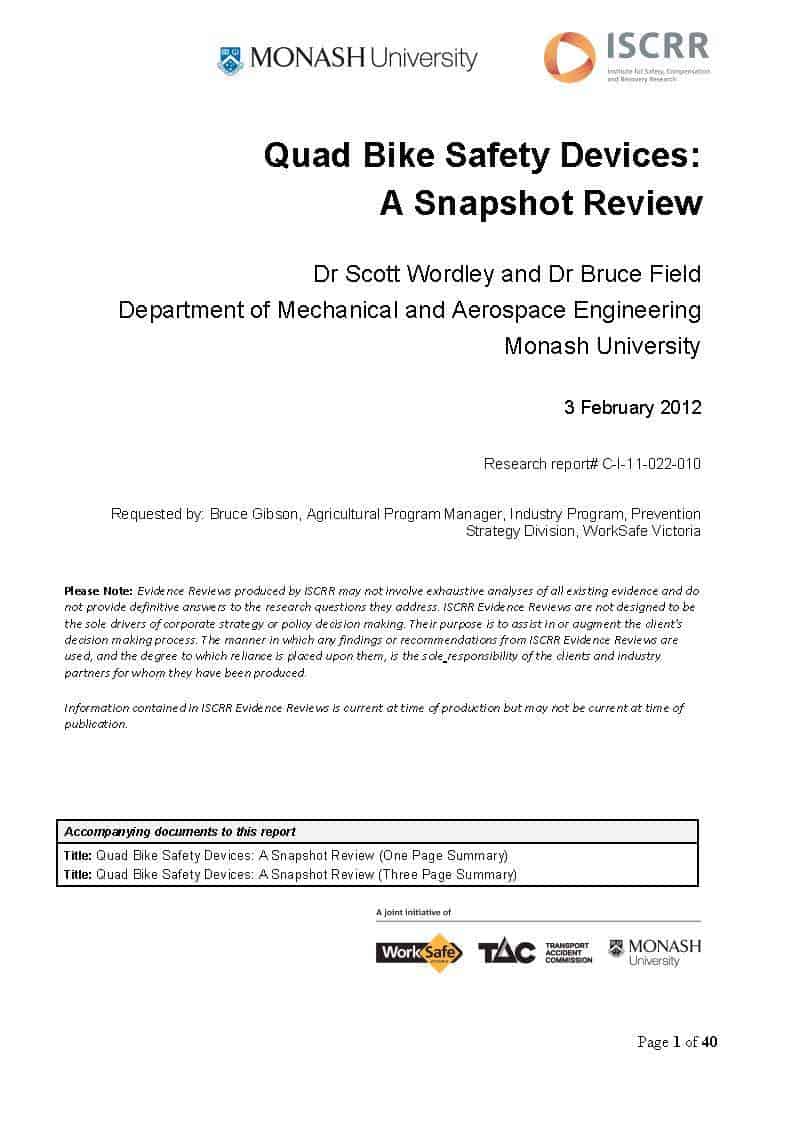 At the end of August 2012, Australia’s Minster for Workplace Relations, Bill Shorten, released a discussion paper on quad bike safety. The intention of the discussion paper is a:
At the end of August 2012, Australia’s Minster for Workplace Relations, Bill Shorten, released a discussion paper on quad bike safety. The intention of the discussion paper is a:
“…calls for submissions on potential improvements to quad bike safety to reduce the alarming rate of quad bike fatalities and injuries….
The comments received will be discussed at a one day forum between all levels of government, farming organisations, unions, industry and community groups to be held in October 2012.”
The paper is fairly thin on details and is certainly not like other discussion papers which present a current state of knowledge or present a set of circumstances that comments are wanted on. But most of the quad bike safety research is readily available on the internet so, perhaps Minister Shorten is acknowledging this reality and the intelligence of those interested in this issue. The paper poses the following questions: Continue reading “The Australian Government looks to apply “above-the-line” safety to quad bikes”


